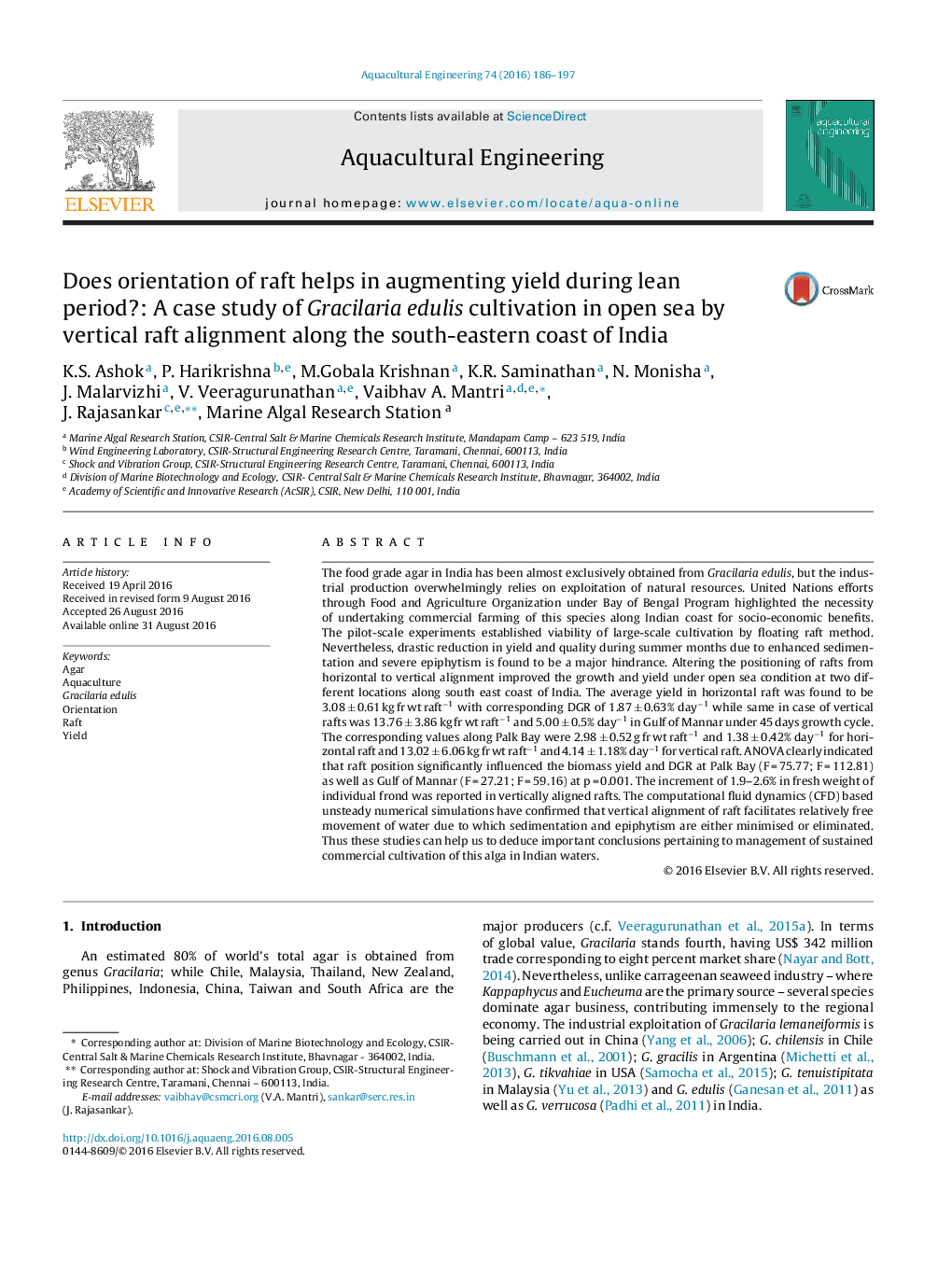| Article ID | Journal | Published Year | Pages | File Type |
|---|---|---|---|---|
| 6381262 | Aquacultural Engineering | 2016 | 12 Pages |
The food grade agar in India has been almost exclusively obtained from Gracilaria edulis, but the industrial production overwhelmingly relies on exploitation of natural resources. United Nations efforts through Food and Agriculture Organization under Bay of Bengal Program highlighted the necessity of undertaking commercial farming of this species along Indian coast for socio-economic benefits. The pilot-scale experiments established viability of large-scale cultivation by floating raft method. Nevertheless, drastic reduction in yield and quality during summer months due to enhanced sedimentation and severe epiphytism is found to be a major hindrance. Altering the positioning of rafts from horizontal to vertical alignment improved the growth and yield under open sea condition at two different locations along south east coast of India. The average yield in horizontal raft was found to be 3.08 ± 0.61 kg fr wt raftâ1 with corresponding DGR of 1.87 ± 0.63% dayâ1 while same in case of vertical rafts was 13.76 ± 3.86 kg fr wt raftâ1 and 5.00 ± 0.5% dayâ1 in Gulf of Mannar under 45 days growth cycle. The corresponding values along Palk Bay were 2.98 ± 0.52 g fr wt raftâ1 and 1.38 ± 0.42% dayâ1 for horizontal raft and 13.02 ± 6.06 kg fr wt raftâ1 and 4.14 ± 1.18% dayâ1 for vertical raft. ANOVA clearly indicated that raft position significantly influenced the biomass yield and DGR at Palk Bay (F = 75.77; F = 112.81) as well as Gulf of Mannar (F = 27.21; F = 59.16) at p = 0.001. The increment of 1.9-2.6% in fresh weight of individual frond was reported in vertically aligned rafts. The computational fluid dynamics (CFD) based unsteady numerical simulations have confirmed that vertical alignment of raft facilitates relatively free movement of water due to which sedimentation and epiphytism are either minimised or eliminated. Thus these studies can help us to deduce important conclusions pertaining to management of sustained commercial cultivation of this alga in Indian waters.
